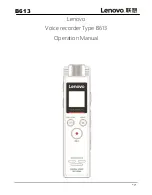
48
NTSC
(National Television System Committee)
The initials stand for National Television Standards
Committee. This is the committee that established the
standards for television systems in the United States. The
NTSC standard broadcasts 525 or 480 lines of resolution
per second, and 30 frames per second of refresh rate, 60
Hz field frequency. NTSC TV system is widely used in
USA, Canada, Latin America and Taiwan etc.
PAL (Phase Alternation by Line)
PAL (Phase Alteration Line) is the color television
broadcast standard throughout the Western Europe (except
in France, where SECAM is the standard), Australia,
China, Singapore and Malaysia etc. It has 625 lines of
vertical resolution per second and 25 frames per second
refresh rate, 50 Hz field frequency.
PBC
Playback Control. A special feature on a Video CD or
Super VCD that enables interactive use.
Progressive Scan
‘Progressive Scan’ mode differs from the ‘Interlaced Scan’
mode in how a video image is updated. In ‘Progressive
Scan’ mode, scan lines for an image are refreshed in every
pass and by a sequential order. In the ‘Interlaced Scan’
mode, image is updated by alternating sets of odd and
even scan lines.
Progressive Scan Mode
Line 1
Line 2
Line 3
Line 4
Line 5
Line 6
Line 7
etc
Interlaced Scan Mode
Line 1
Line 2
Line 3
Line 4
Line 5
Line 6
Line 7
etc
S-Video
A video signal which improves picture quality over
standard composite connections. Used on Super VHS,
DVD, high end TV monitors, etc.
Track
SVCD, VCD, Audio CD discs use tracks to divide up the
content of a disc.
WMA
WMA stands for ‘Windows Media Audio’, an audio codec
standard proposed by Microsoft. Music/audio files which
are compressed using this standard come with the file
extension, .wma or .WMA.









































